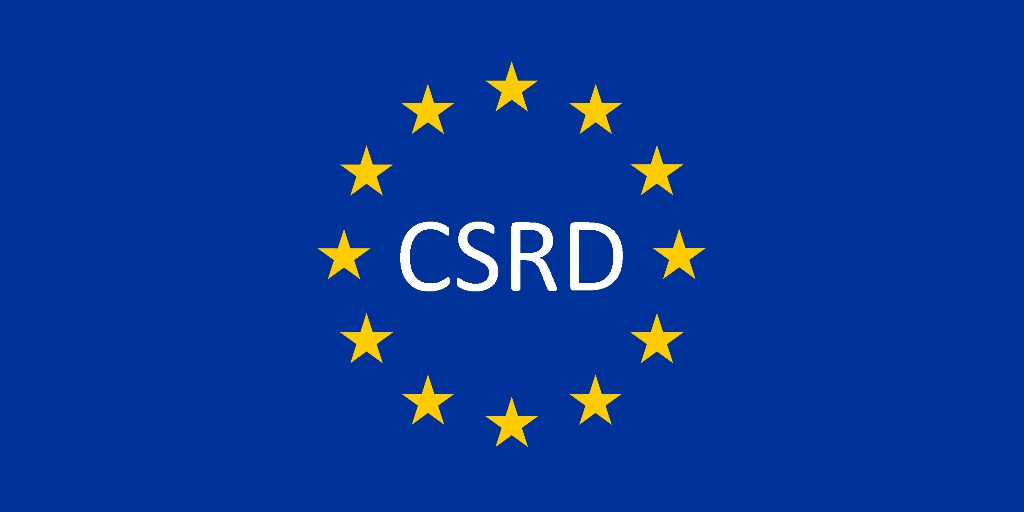
Introduction to the Corporate Sustainability Reporting Directive (CSRD)
The Corporate Sustainability Reporting Directive (CSRD) is a pivotal regulation introduced by the European Union (EU) aimed at improving transparency and accountability in corporate sustainability reporting. The CSRD builds on the existing Non-Financial Reporting Directive (NFRD) and mandates standardised reporting on environmental, social, and governance (ESG) factors for companies operating within the EU. This blog will help businesses understand CSRD, how it differs from NFRD, and how to prepare for compliance.
What is the CSRD?
The CSRD is designed to increase the availability of reliable and comparable ESG data across all industries. By establishing mandatory sustainability reporting standards, the CSRD enables investors, regulators, and the public to make informed decisions about the sustainability practices of businesses. It also supports the EU’s broader goal of reaching net-zero emissions by 2050.
CSRD vs. NFRD: Key Differences
| Criteria |
NFRD |
CSRD |
| Scope |
Large public-interest entities |
All large companies and listed SMEs (except micro) |
| Reporting Standards |
National standards or guidelines |
Mandatory EU Sustainability Reporting Standards |
| Audit Requirements |
Not mandatory |
Independent audit required |
| Digital Reporting |
Not required |
Mandatory digital reporting (ESAP platform) |
| ESG Criteria |
Basic ESG indicators |
Detailed and broad coverage of sustainability risks and impacts |
| Timeline |
No standardised timeline |
Defined timeline for implementation |
Who is Affected by the CSRD?
Under the CSRD, the following entities are required to report their sustainability activities:
- Large companies meeting at least two of the following criteria:
- Over 250 employees
- Turnover exceeding €40 million
- Total assets exceeding €20 million
- Listed SMEs, excluding micro-enterprises
- Parent companies must report for their entire group
These companies will need to provide information on how sustainability issues affect their business and how their operations impact people and the environment.
What Needs to be Reported?
The CSRD requires disclosure across a wide range of sustainability topics, including:
-
Environmental Factors:
-
Climate change mitigation and adaptation
-
Resource use and circular economy practices
-
Pollution, biodiversity, and ecosystems
-
Social Factors:
-
Equal opportunities (gender equality, diversity)
-
Working conditions (health and safety, fair wages)
-
Respect for human rights
-
Government Factors:
-
Business ethics and anti-corruption
-
Corporate governance structures
-
Risk management and internal controls
Timeline for CSRD Implementation
The CSRD is being implemented in a phased approach based on company size and market listing status. Below is the timeline:
(A CSRD Implementation Timeline)
| Company Type |
Reporting Period |
| Large listed companies |
FY 2024 (reports due in 2025) |
| Large non-listed companies |
FY 2025 (reports due in 2026) |
| Listed SMEs |
FY 2026 (reports due in 2027) |
The First phase: 1st January 2024
Large companies with over 500 employees that are already subject to the Non-Financial Reporting Directive (NFDR).
The “first-phase” companies must start reporting according to the CSRD requirements for the 2024 fiscal year, with the report to be published in 2025.
The Second phase: 1st January 2025
From this phase on, the first set of companies that weren’t previously subject to the NFDR will need to comply with the CSRD requirements. This applies to large companies that meet at least two out of three specified requirements:
- More than 250 employees and/or
- 40 million EUR in turnover and/ or
- 20 million EUR in total assets
Companies in the second phase will have to start reporting according to the CSRD requirements in 2025, with the reports to be published in 2026.
The Third phase: 1st January 2026
From the 1st of January 2026, the CSRD will also be applied to small and medium-sized enterprises (SMEs) listed on EU-regulated markets that exceed at least two of these thresholds :
- more than 10 employees
- more than 700 000 EUR in net turnover
- more than 350 000 EUR in total assets
SMEs and other small and non-complex institutions must implement the CSRD and align to the ESRS from the financial year 2026. However, they will have the option to opt out of the reporting rules until 1st January 2028.
CSRD will not cover enterprises with less than 10 employees or below 2 million EUR.
The Fourth phase: 1st January 2028
From the 1st of January 2028, CSRD will be applied to non-EU-country companies that meet the following requirements:
- a net turnover exceeding 150 million EUR in the EU and
- at least one subsidiary or branch in the EU.
How to Prepare for CSRD Compliance? (Steps to Take)
-
Assess Current Reporting
Evaluate your existing ESG reporting practices and identify gaps between NFRD and CSRD requirements.
-
Develop a Reporting Strategy
Align your sustainability strategy with the mandatory reporting standards set by the European Sustainability Reporting Standards (ESRS).
-
Engage Key Stakeholders
Involve relevant departments like finance, HR, operations, and legal teams to ensure that ESG data is collected comprehensively.
-
Upgrade Data Collection Systems
Implement data management tools to track environmental, social, and governance metrics accurately.
-
Prepare for Audits
Ensure your sustainability reporting is auditable by external parties, as CSRD mandates third-party verification.
CSRD Compliance Checklist for Companies
| Checklist Item |
Status |
Notes |
| 1. Assess Company Eligibility |
|
Identify if your company falls under CSRD scope. Large companies, listed SMEs, and parent companies must comply. |
| - Over 250 employees |
❏ |
|
| - Turnover exceeding €40 million |
❏ |
|
| - Total assets exceeding €20 million |
❏ |
|
| 2. Review Current ESG Reporting |
|
Evaluate existing sustainability reporting under NFRD or other frameworks (e.g., GRI, TCFD). |
| - Environmental impact metrics (CO2, waste) |
❏ |
|
| - Social impact metrics (diversity, labor) |
❏ |
|
| - Governance metrics (ethics, transparency) |
❏ |
|
| 3. Identify Gaps in Reporting |
|
Compare current reporting practices with CSRD requirements (broader and more detailed). |
| - Environmental reporting compliance |
❏ |
|
| - Social factors and labor practices |
❏ |
|
| - Governance and anti-corruption practices |
❏ |
|
| 4. Align with European Sustainability Reporting Standards (ESRS) |
❏ |
Ensure compliance with the new EU Sustainability Reporting Standards (mandatory under CSRD). |
| 5. Engage Stakeholders |
|
Involve internal teams (HR, operations, finance) in data collection and reporting. |
| - Cross-departmental collaboration |
❏ |
|
| - External advisors for ESG strategy |
❏ |
|
| 6. Implement or Upgrade Data Collection Tools |
❏ |
Introduce new or upgraded systems to track and monitor ESG data. |
| - Environmental data (CO2, energy, waste) |
❏ |
|
| - Social data (working conditions, diversity) |
❏ |
|
| - Governance data (risk management) |
❏ |
|
| 7. Prepare for Independent Audit |
|
Ensure that sustainability reports are auditable by external, third-party entities. |
| - External auditor selected |
❏ |
|
| - ESG data validation and verification |
❏ |
|
| 8. Transition to Digital Reporting |
❏ |
Implement digital reporting solutions for submission to the European Single Access Point (ESAP). |
| 9. Communicate Sustainability Strategy |
|
Publicly disclose sustainability strategies and performance through annual reports. |
| - Board approval of sustainability strategy |
❏ |
|
| - Public ESG disclosures |
❏ |
|
| 10. Meet Reporting Deadlines |
|
Ensure reports are prepared and submitted according to the following deadlines: |
| - Large listed companies (2025) |
❏ |
|
| - Large non-listed companies (2026) |
❏ |
|
| - Listed SMEs (2027) |
❏ |
|
Benefits of CSRD Compliance: CSRD compliance offers several advantages
- Enhanced Transparency: Standardised reporting enhances stakeholder trust and company credibility.
- Improved Risk Management: Identifying ESG risks early can prevent financial and reputational damage.
- Access to Capital: Sustainable investors are increasingly favoring companies with solid ESG credentials.
Challenges Companies Might Face
While the CSRD brings numerous benefits, there are potential challenges, such as:
- Increased Reporting Costs: Enhanced data collection, third-party audits, and compliance measures can increase operational costs.
- Data Availability: Collecting reliable ESG data across global supply chains can be challenging for many businesses.
- Changing Standards: As sustainability frameworks evolve, staying updated with the latest reporting standards will be crucial.
ESG Reporting Example (Visual)
Here’s an illustrative breakdown of a hypothetical company's ESG performance using CSRD metrics:
Environmental Metrics (Example Chart) - Example of Environmental Reporting under CSRD
| Indicator |
2024 |
2025 |
2026 |
| CO2 Emissions (Scope 1 & 2) |
5000 |
4500 |
4000 |
| Energy Consumption (GWh) |
10 |
9.5 |
8.9 |
| Waste Recycled (%) |
60% |
65% |
70% |
| Water Usage (million liters) |
500 |
475 |
450 |
Conclusion
The CSRD will transform how companies approach sustainability reporting. By requiring detailed, standardised disclosures, it encourages transparency, promotes sustainable business practices, and aligns Europe’s corporate sector with the EU’s climate goals. Companies must start preparing for compliance now to avoid penalties and enhance their ESG profiles.
In summary, CSRD is not merely a regulatory hurdle—it is an opportunity for companies to innovate and lead the charge towards a more sustainable future.
For more information and assistance with CSRD compliance, visit contact us at 01788 538150 or drop us a note here and we will get in touch with you.






